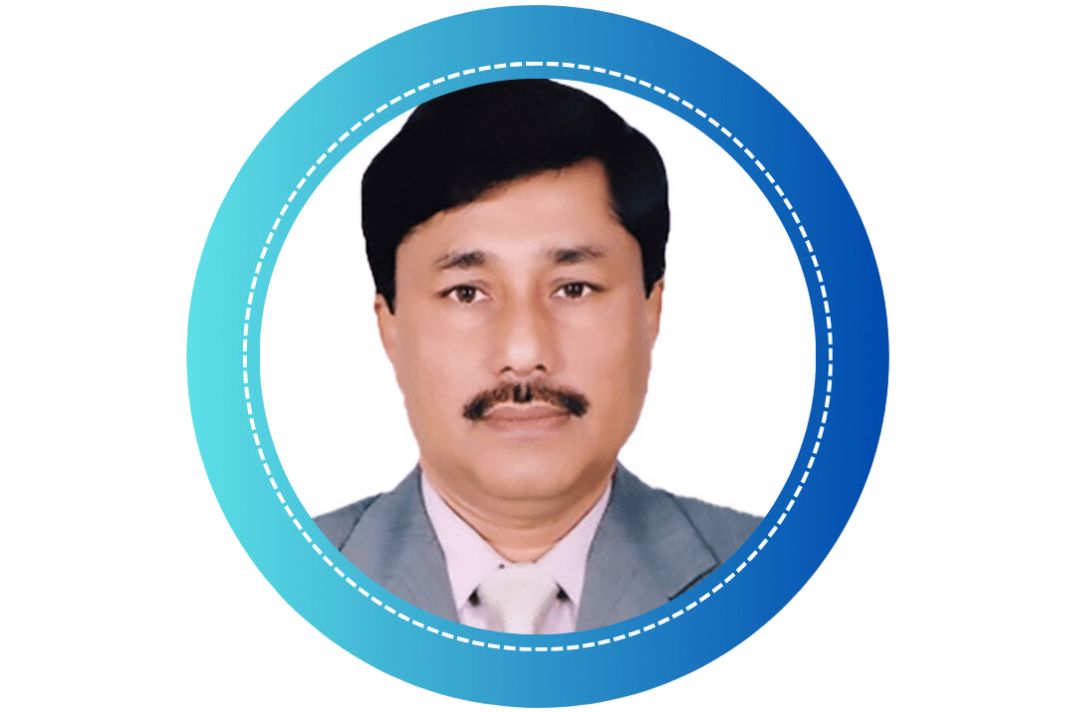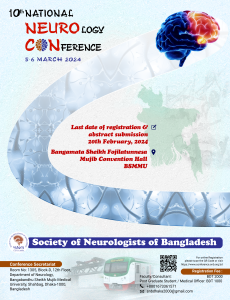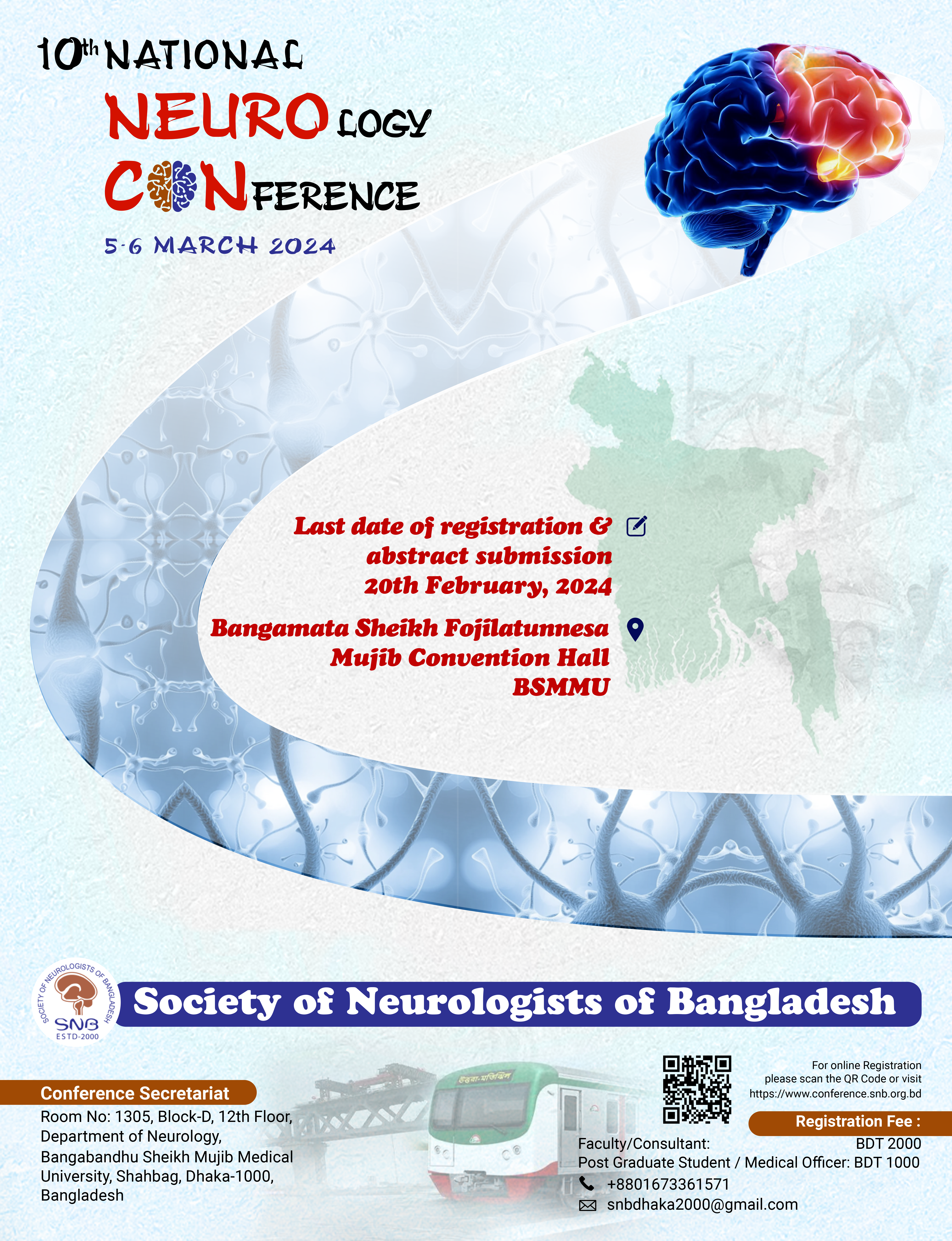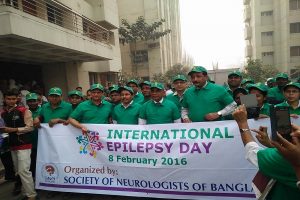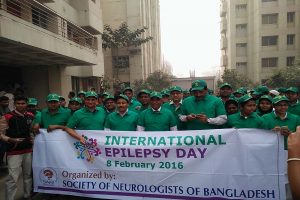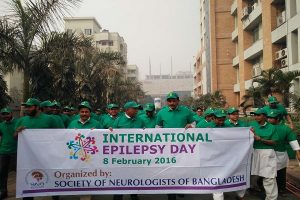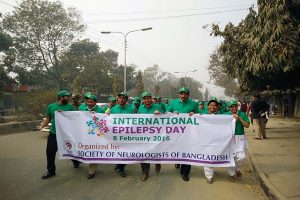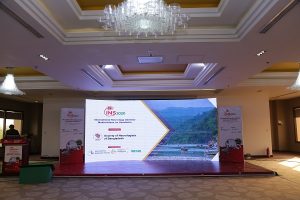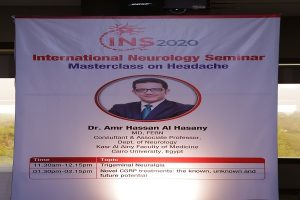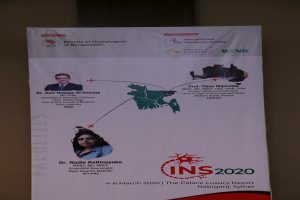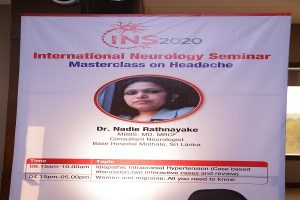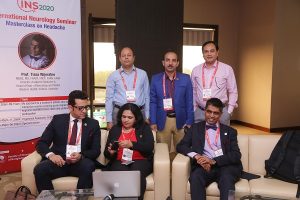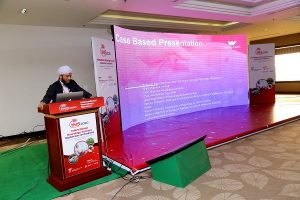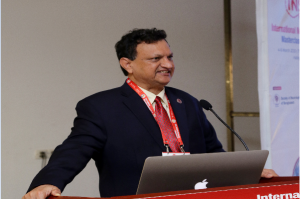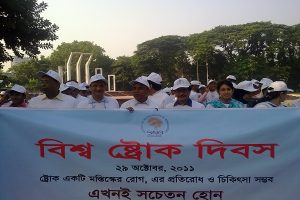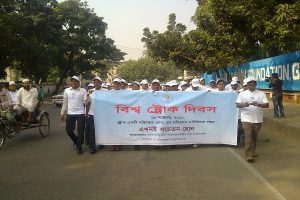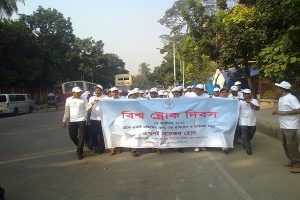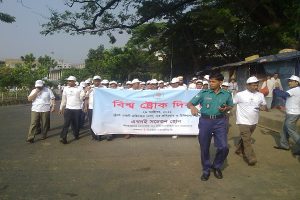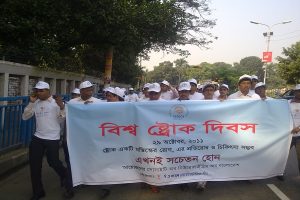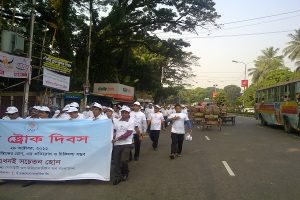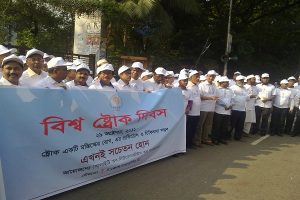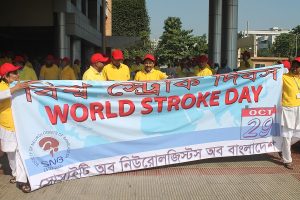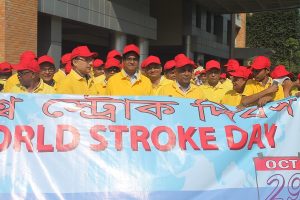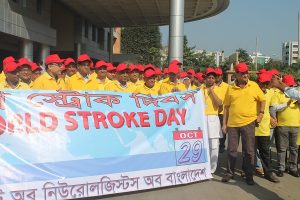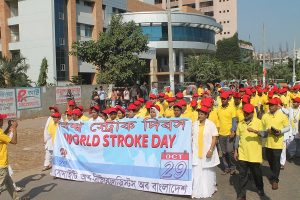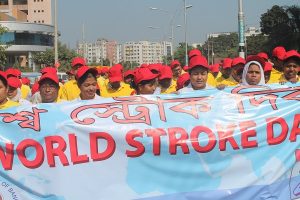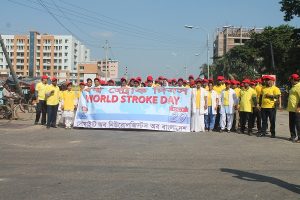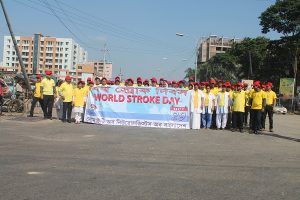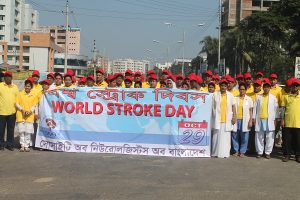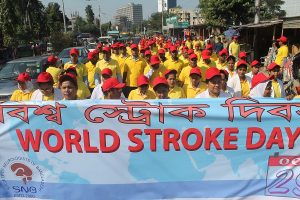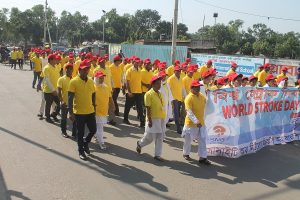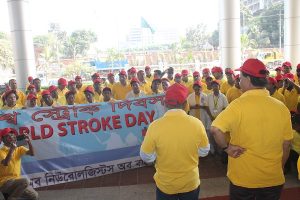





Latest News
WELCOME TO SOCIETY OF NEUROLOGISTS OF BANGLADESH (SNB)
The Society of Neurologists of Bangladesh (SNB) is a platform for all the Neurologists of Bangladesh. Our association is an ever expanding and evolving one, pursuing the highest level of Neurologists care
Latest News
Dear Colleagues and Friends,
A warm wish to all of you in 2024 and a Happy new year. Society of Neurologist of Bangladesh is very happy to announce the 10th National Neurology Conference to be held on 05 to 06 march 2024 at Bangamata Sheikh Fazilatunnesa Mujib Convention Hall, BSMMU, Dhaka. Due to the COVID pandemic we could not arrange any national or international scientific seminar in last couple of years. Now, it is the high time to gather and share the knowledge and experience in the ever growing field of neurology. With your active participation the seminar will enrich all of us. This year, we have tried to incorporate the knowledge of our senior professors as well as the basic works of our colleagues as the topics of discussion.
Date: 05 to 06 march 2024(Tuesday and Wednesday)
Venue: Bangamata Sheikh Fazilatunnesa Mujib Convention Hall, BSMMU, Dhhaka
Registration Fees: Faculty/Consultant – TK 2000 , Post-graduate Student / Medical Officer – TK 1000
Last date for Abstract submission: 20.02.2024
Last Date for Registration: 20.02.2024
For any registration related queries please contact, Room No:-1321, Block-D, 12th Floor, Department of Neurology, Bangabandhu Sheikh Mujib Medical University, Shahbag, Dhaka-1000, Bangladesh
Deadline: 20.02.2024
Submission Guideline:
Before submitting your abstract, thank you for paying attention to the following guidelines:
- You must complete the registration process before submitting the abstract.
- You will be able to submit abstracts in each topic, but a maximum of 1 abstract per topic is allowed.
- You will be able to submit abstract online and you will get a confirmation email of submission.
- Abstract will be within 250 words
- Best three abstract will be awarded and accepted for free paper session.
- One abstract will be awarded from the free paper presentation.
- No abstract can be submitted after the dead line.
[contact-form-7 id=”53fde16″ title=”Contact form 1″]
Oral presentation of Free Papers are expected to have very high scientific quality and should
correspond to complete studies with outstanding results and innovative conclusions.
The work needs to be scheduled for 5 minutes of presentation (maximum 10 slides).
Speakers must adhere strictly to the scheduled times according to the program.
- The presenter will be provided with an LED screen
- Only computer projection will be available.
- It will be possible to use personal laptops.
- Speakers are kindly requested to use PowerPoint MS Office (Windows or Mac).
Presentations prepared with Keynote and Prezi can also be accepted but additional
technical support might be required on-site.
- We recommend using “.gif” and “.jpg” formats for images. Other types of extension
are accepted but prior advice from our technical team on-site is required. - MPEG2 is the preferred format for embedded videos, but *.avi, *.wmv are also
accepted. - Confirm that all the necessary files are in the SAME FOLDER as your presentation.
- Use large fonts (the minimum font size should be 18 points). If you cannot fit all your
subjects on a slide without moving to a smaller font, break the points up onto separate
slides. - Confirm that your presentation contains only standard fonts. For cross-platform
compatibility, the use of Times New Roman, Arial, Verdana is advised. Some other fonts
may not transfer properly from your computer to the system used for presentation. - Limit each slide to one main idea with three to six points. If more than six points (bullets)
are included in one slide, your audience will have difficulties to read it. We recommend 5
to 7 slides for a five-minute free paper. - The use of USB pens or memory sticks is advisable to upload presentations easily at the
Centre.
Enclosure of a disclaimer at the bottom of the ending slide (Acknowledgment,
Summary, or Question Answer Session slide) is recommended.
General instructions for your poster
- Poster size should be A0 portrait oriented (width: 84.1cm / 33.1 inch, Length:118.9cm / 46.8 inch). Do not exceed these dimensions.
- Apply the KISS principle: ‘Keep it Short and Simple’. Avoid putting too much text and figures on the poster.
- Your poster is a visual aid to present your work. The less text the better. Visual elements such as figures, graphs, diagrams should dominate.
- Use a light colour background and dark colour letters for contrast. Use 2-3 colours and avoid overly bright colours.
- Presenting your poster: Prepare a poster pitch of three minutes at the very most, in which you walk your audience through the most important results of your poster. Practice your poster pitch beforehand. Only provide more information to those who ask, remember, most attendees would like to visit as many posters as
possible. - Include a photo of yourself and your contact information, so that people can reachout to you if they look at your poster when you are not there.
Font size type
- The poster must be easily readable from 2 m distance
- The title should be at least 100 pt, font size the text on the poster at least 36 pt.
- Don’t mix fonts, chose one font for all text blocs in the entire poster. You may wish to use a second font for title + headings and figures and tables.
Text elements
- Use text sparingly. Your poster is not a paper, and there is little time for visitors to read. Let the visuals speak.
- se columns of max. 70 characters (including spaces) width. Avoid large blocks with text and long sentences (10 sentences per block; 50 words per block).
- Avoid large blocks of text. Instead, use bulleted statements.
- Avoid abbreviations. When abbreviations or codes are necessary, keep them as simple as possible.
- Choose the line spacing such that the use of sub- and superscripts will not affect the layout of text blocks.
Poster design
- Your title is 90% of your poster. It’s the first thing the audience reads. If your title is long and complicated, most will assume the rest of your poster is as well.
- Place your most important information on the top or middle of the poster, not on the bottom where most people cannot easily read it.
- The objectives of the study, the research questions or the hypothesis should be clearly stated in as few words as possible.
- As a rule, methods should be as short and general as possible.
- Results should be presented preferably as figures, graphs, etc.. They should be self-explanatory and include a legend. Providing an interpretation of the resultsbelow each image helps the reader understand what the take home message ofthe image is.
- The conclusions should be succinctly stated on large type font. Many viewers read the conclusions first, and read only your conclusions. Hence the main conclusions should be easy to locate and easy to understand. Indicate in the conclusions:
- do your findings confirm your hypothesis?
- the novelty your findings
- their relevance beyond your study
- their relevance beyond your study Figures and Graphs An image says 1000 words. Let your images do the talking, not the text.
- Graphs or tables should be self-explanatory and include a well-worded, concise legend. Symbols are best explained in an inset within the figure or graph, so thereader doesn’t have to jump back and forth between the legend and the image.
- Put legends above a table and below a figure.
- Keep legends short (10-25 words).
Figures
- Properly label the x- and y-axis of graphs, include units.
- Keep graphs as simple as possible.
- Include the results of statistical analyses (significance levels) in the graphs by using discriminating letter codes (a, ab, b) or asterisks (*, **, ***).
Tables
- Do not use tables that contain more than 20 items. Complex data should not be included in your poster but may be provided in a separate information sheet.
- Do not give more decimals than necessary to show meaningful variation.

Aims and Objective of SNB
To establish and form a non-profiting and non-political forum of neurologists who will be dealing with neurological disorders.
To create and maintain spirit and unity, cooperation, solidarity and fellow feeling among the Neurologists of Bangladesh.
To protect and advance the interest, rights and privileges of the Neurologists of Bangladesh and to uphold the dignity, honour and prestige of them
Our Great Leadership
All neurologists of the country being desirous to form an association under the name of “Society of Neurologists of Bangladesh”, under their signatures write down this constitution.

